
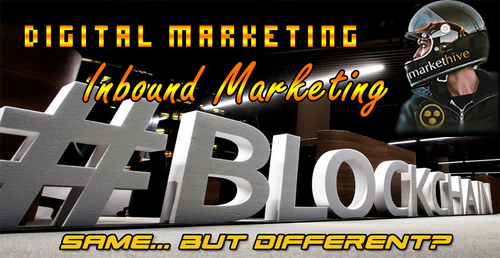
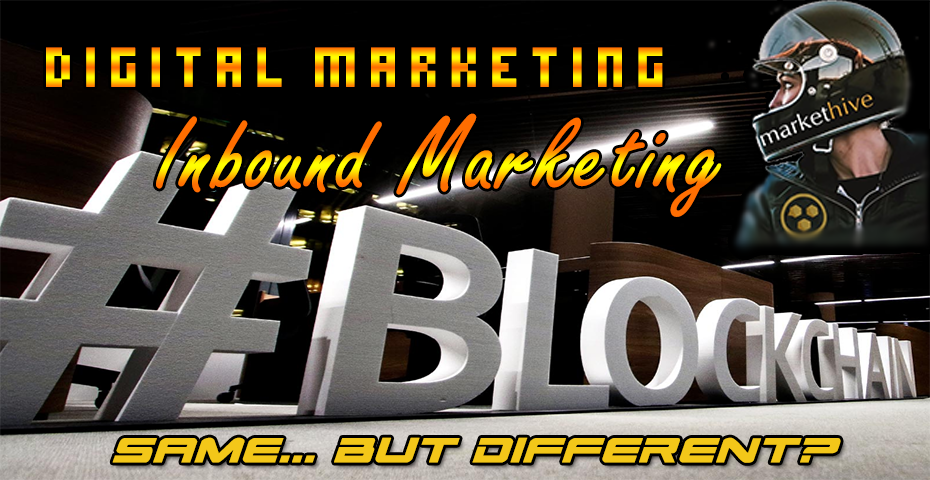
In the world of online marketing, we encounter a lot of jargon. Terms like inbound marketing, SEO, digital marketing, conversion, PPC, call-to-action, outbound, content marketing and so on. One that many find confusing is the difference between digital marketing and inbound marketing.
On the surface, the two seem similar: Both occur primarily online, and both focus on creating digital content for people to consume. But there is a difference, albeit you undoubtedly use some digital marketing tactics in your inbound marketing strategy.
The term "digital marketing" doesn't differentiate between push and pull marketing tactics or what is referred to as ‘inbound' and ‘outbound' methods. Both still tend to fall under the umbrella of digital marketing.
The term digital marketing is often defined as an across-the-board marketing tactic that’s done on a digital medium. Digital marketing is the use of the internet, mobile devices, social media, search engines, display advertising, website banners, and other channels with the aim to put a marketing message or advertisement directly in front of as many consumers as possible, regardless of whether it’s relevant or welcomed. There is a lot it can be used for, but the term really doesn’t indicate any sort of strategy. It’s more like a toolbox that has all the marketing tools you can utilize to be seen online, acquire more traffic and increase brand awareness.
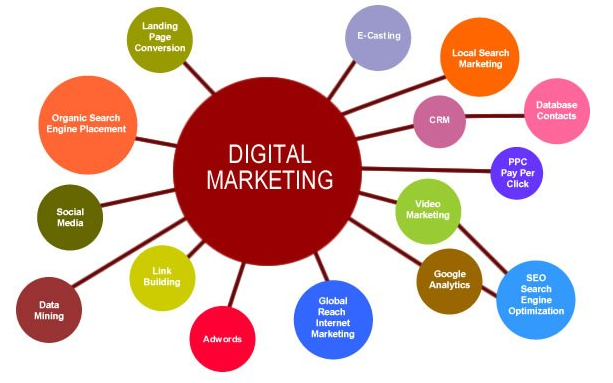
Unlike digital marketing, inbound marketing is a clear and prescribed marketing strategy that has definitive steps and best practices. Inbound marketing does use a lot of digital marketing channels, however, it’s a set methodology that works to attract qualified visitors and generate leads. It is a continuing, holistic strategy that embodies a set of specific steps. It’s more of a philosophy that puts customers first and the digital marketing tactics help you to achieve that philosophy.
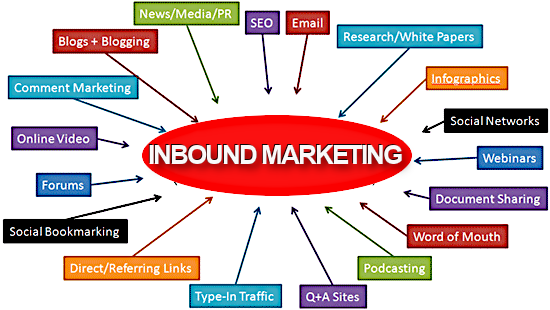
Brand awareness + Short term goals = Digital Marketing
If your goal is to get your brand out there and get just anyone to visit your website, then a few digital marketing approaches may help. Using digital marketing methods alone only works to solve short term goals like increasing traffic to your website.
For example, you can run a Facebook Like campaign or place banner ads, but those techniques alone will only produce results that are limited to those actions. A Like campaign will almost surely get more likes and banner ads might get more people to your site but that’s about the extent of it. If you’re wanting to generate leads that convert to legitimate, qualified customers, an inbound marketing approach is a proven way to go.
Qualified leads + Long term goals = Inbound Marketing
An Inbound Marketing strategy uses each of the digital marketing tactics and incorporates them into a greater strategy creating results of each tactic. Effective inbound marketing strategies consist of creating useful and interesting content that appeals to qualified leads. Developing landing pages and calls-to-actions that capture the contact information of the people who have shown an interest in what you are offering and deploy email campaigns that are relevant to those specific contacts.
Ultimately you’ll have created a full strategy that makes each of the digital marketing tactics work hand in hand to create a whole that’s greater than the sum of its parts. This performs long term to continue to deliver qualified leads and boost your conversion rates over time.
Inbound marketing is like playing the long game. it leads to more solid, consistent results, adding value at every stage of your customers’ buying journey.
Digital marketing is playing the short game, where you get immediate results, but very often they’re not worth as much in the long term.

Content is an important component of Inbound Marketing. Blogging or writing articles of helpful information discerning their needs and defining a solution even if they aren’t aware they have a problem or a need initially, is a great way to build trust. Informative content that anticipates the prospects’ questions and needs is the best practice to demonstrate that you genuinely care about the consumer.
A study showed that 78% of purchasers want to build genuine bonds with companies offering customized material, which is content that has been created specifically for the customer that has purchased. Another report demonstrated 53% of consumers were more willing to buy goods and services if they previously read an article about it on the internet. Needless to say, this applies to all types of conversions in any industry.
The main consumer segment will very soon be the millennials which are people born from the 1980s to the early 2000s. One of the standout features of this generation is that they do not trust traditional advertising. They don’t even notice it. Traditional advertising fails to speak the language of generation Y, but blogs or articles do.
Many studies have been conducted involving thousands of men and women of all ages which demonstrated that most of them do not even closely trust advertisements alone.
70% of people made the decision to purchase on the advice of a friend or family member or because they saw the blog post about the company on the internet.
55% purchased after reading an article online. In fact, 70% of buyers prefer to learn about the company from articles, not from an advert.
If we want to appeal to all customers of today, we need to produce engaging content and have it in front of our audience wherever they may be. Fundamentally, the real value of informational content is the fact that it is portable. In other words, being viewed on many different platforms creating an overall presence and exponentially increasing your reach. Creating quality content is a good investment and you will feel the effects of your investment for a long time to come.
We saw how the internet changed traditional offline marketing back in the 1990s. Now we will witness how Blockchain will transform the digital world in terms of marketing and advertising. The essential objectives of building trust and nurturing relationships will never change, but will Blockchain technology be able to clean up and enhance the industry?
There are many ways that blockchain can assist marketers and consumers and improve a somewhat chaotic space. It can bring transparency and honesty to the marketing table that has been inundated with a huge amount of spam and bots.
Greater transparency strengthens trust between brands and customers. One example is since Walmart and IBM collaboratively introduced blockchain, customer confidence increased. Thanks to blockchain, Walmart’s supply chain became more transparent and customers were able to track the origin of the products.
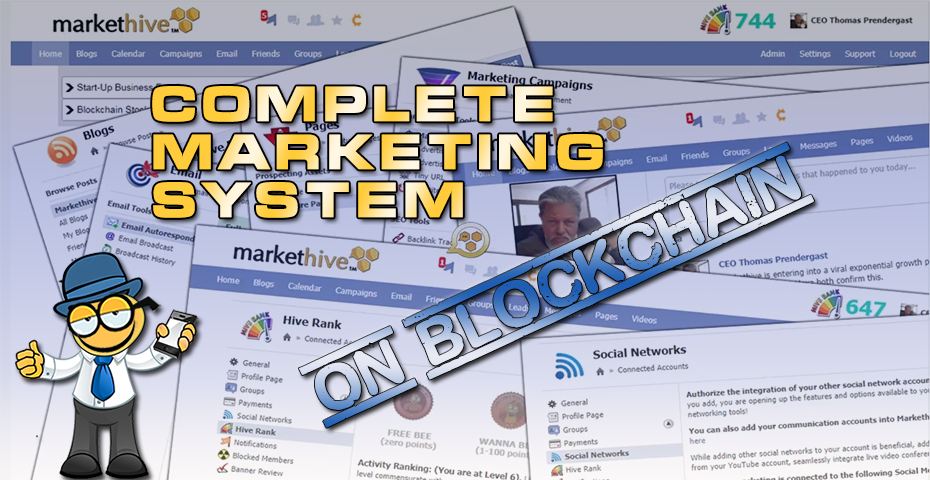
There is a solution to the copyright problem which gives more control tools to creators. Article 11 (link tax) and Article 13 legislation which is designed to stop users from uploading copyrighted content by forcing platforms to build massive filters or face huge lawsuits and fines, seems to be an archaic and inadequate solution and would impede online development and innovation.
A more appropriate response is needed to protect not only artists and their creations, but also the platforms that enable mass content sharing. Platforms that have shaped the internet and have connected our world more inclusively and comprehensively.
Markethive with its blockchain in development and broader vision gives you your own domain for all your content, videos and images to originate from. When you join Markethive you receive (for free) a CPanel which is a control panel and WordPress system built into your assigned domain, a subdomain of hivesfeed.com. This way you control all your content, without the worry or hassles of government overreach and anti-freedom regulations designed to stifle the small entrepreneur.
It is a marketers dream and a complete solution. Markethive has integrated the digital marketing tools along with an inbound marketing system and it’s built on the blockchain, giving you privacy, transparency, freedom of speech and the autonomy you need to overcome any obstacles experienced on the internet today and let’s not forget you get paid for using the system while marketing your business.
The internet has become so noisy that it’s not that easy to attract attention. Furthermore, there are so many platforms and choices willing to assist you in your marketing efforts. You need an edge and Blockchain can give you that edge. Companies that have adopted the blockchain technology can offer cryptocurrency in the form of loyalty programs, micropayments, etc which levels the playing field bringing new ways to earn an income.
The only way blockchain can harm marketers is if they refuse to accept and learn about this new technology and become proficient at it. This is just the beginning. In the early 90s, no one even dreamed of search engines, social media, and smartphones. Today, blockchain takes us to new heights of self-sovereignty as the possibilities of Blockchain Technology and Cryptocurrency are almost endless.
It is an exciting time in marketing, as marketers start to realize the benefits of blockchain technology. Above is an outline of just some of the ways it will transform the marketing industry. Additionally, there have been numerous studies asserting that blockchain technology is destined to disrupt the fundamental nature of the global economy, including major changes like:
How organizations are funded and managed, how companies create value and how businesses perform basic functions such as marketing, accounting, and incentivizing people.

Deb Williams
A Crypto/Blockchain enthusiast and a strong advocate for technology, progress, and freedom of speech. I embrace "change" with a passion and my purpose in life is to help people understand, accept and move forward with enthusiasm to achieve their goals.
To Join Markethive for FREE click on the image below:
